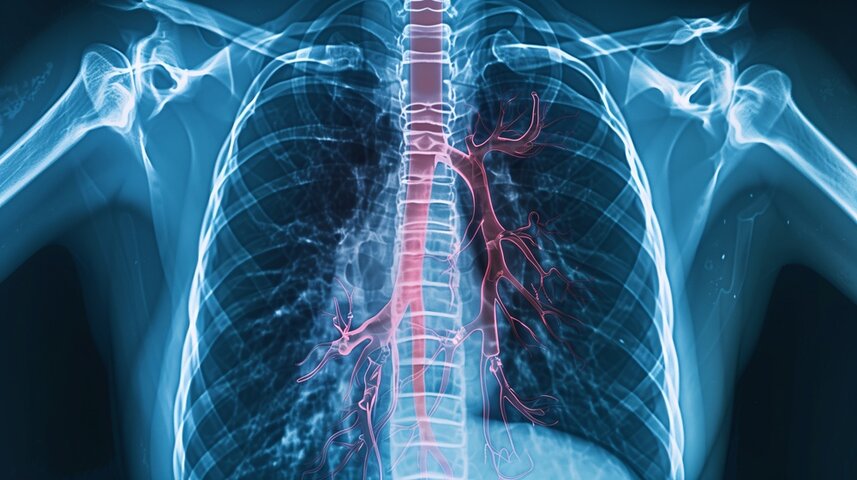+62 859-3135-3197
Aortic Aneurysm: Recognize the Symptoms and Causes

Has been reviewed and approved by dr. Rendra Mahardhika Putra, Sp.JP(K)
An aneurysm is the presence of widening of the blood vessels due to weakening of the blood vessel walls, potentially leading to rupture. An aortic aneurysm, on the other hand, occurs in the aorta. A more complete explanation of aortic aneurysms is provided below.
Types of Blood Vessels
There are three types of blood vessels in the human body. Although they have the same function, namely, to transport blood, there are differences between them:
Arteries: functions to carry oxygenated blood from the heart to the entire body and consists of various sizes.
Veins: serves to bring deoxygenated blood back to the heart and around the skin. Specifically for the pulmonary vein, it is a blood vessel that carries oxygen-rich blood from the lungs to the heart.
Capillaries: They function to connect arteries to veins and are the smallest in size. These blood vessels allow oxygen, nutrients, and waste products to flow to cells and tissues in the body.
The aorta is the largest artery in the body and carries oxygen-rich blood from the heart through the circulatory system. The aorta resembles a stick, originating in the lower left ventricle of the heart, curves, and then flows straight through the chest and abdominal cavities, ending in the pelvis. Along its course, the aorta has numerous smaller branches that reach all the nerves, organs, and tissues in the body.
Aortic Aneurysm and Its Types
An aortic aneurysm is the presence of protrusion or bulging of the aorta blood vessel due to weakening of the wall. The appearance of protrusion This is caused by pressure from the blood flowing in the weakened wall area.
Based on its location, aortic aneurysms can be divided into 2 types, namely:
Abdominal Aortic Aneurysm (AAA): An aneurysm that occurs in the aorta that passes through the abdomen. This condition often causes no symptoms, but sometimes causes lower back pain or a throbbing sensation in the abdominal area.
Thoracic aortic aneurysm (TAA): aneurysm that occurs in the incurved part of aorta. Compared to AAA, TAA is rare because the blood vessels in this area have thicker walls.
Causes of Aortic Aneurysm
Aortic aneurysm can occur as a complication of other diseases, some of which are:
High blood pressure
High cholesterol
Atherosclerosis
Chronic Obstructive Pulmonary Disease
Apart from being a complication of the disease, there are also several conditions that can cause an aortic aneurysm, namely:
Impact of the accident
The presence of an infection that is not treated properly
Having a family history of aneurysms
Having an unhealthy lifestyle, such as smoking
Furthermore, while anyone can experience this disease, men are at higher risk, especially those aged 65 and older.
Aortic Aneurysm Symptoms
Unfortunately, aortic aneurysm is a disease that has no early symptoms.. Symptoms generally only appear after the aorta has ruptured. However, as the aortic wall balloons, you may experience several symptoms, including:
Feel full faster when eating
Pain in the abdomen and back, or in the area where the aortic aneurysm is located
There is a throbbing sensation in the stomach area
Feeling a lump in the stomach
Meanwhile, some symptoms of a ruptured aortic aneurysm that you should be aware of are:
Headache
Excruciating pain in the stomach, chest, or back area
Heart beats faster
A ruptured aortic aneurysm usually occurs suddenly, so these symptoms will also appear suddenly. Delayed treatment can be very dangerous because it can cause internal bleeding, so you need to seek further treatment immediately if you experience the above symptoms.
Aortic Aneurysm Diagnosis
Examination of aortic aneurysm is performed using Ultrasound Scan, A CT scan and an MRI scan will be performed to determine the severity of your aortic aneurysm. Then, appropriate treatment will be provided based on the test results.
For those of you who are male and are 65 years old or older, it is recommended that you undergo an initial examination for this disease because the risk to you is greater. With detection the earlier you get treatment, the sooner you can get treatment, thus minimizing the complications you might experience due to late treatment.
You can do the check by coming to heart & vascular center Of Premier Hospital Surabaya Here, you will be cared for by an experienced medical team, equipped with comprehensive and sophisticated equipment to enhance the accuracy of your analysis and determine the best treatment for your condition.
Contact Us
For information and to make appointment
Source

dr. Rendra Mahardhika Putra, Sp.JP, Subsp.Vas (K), FIHA
Jantung View Schedule| Loading data... |
|---|















